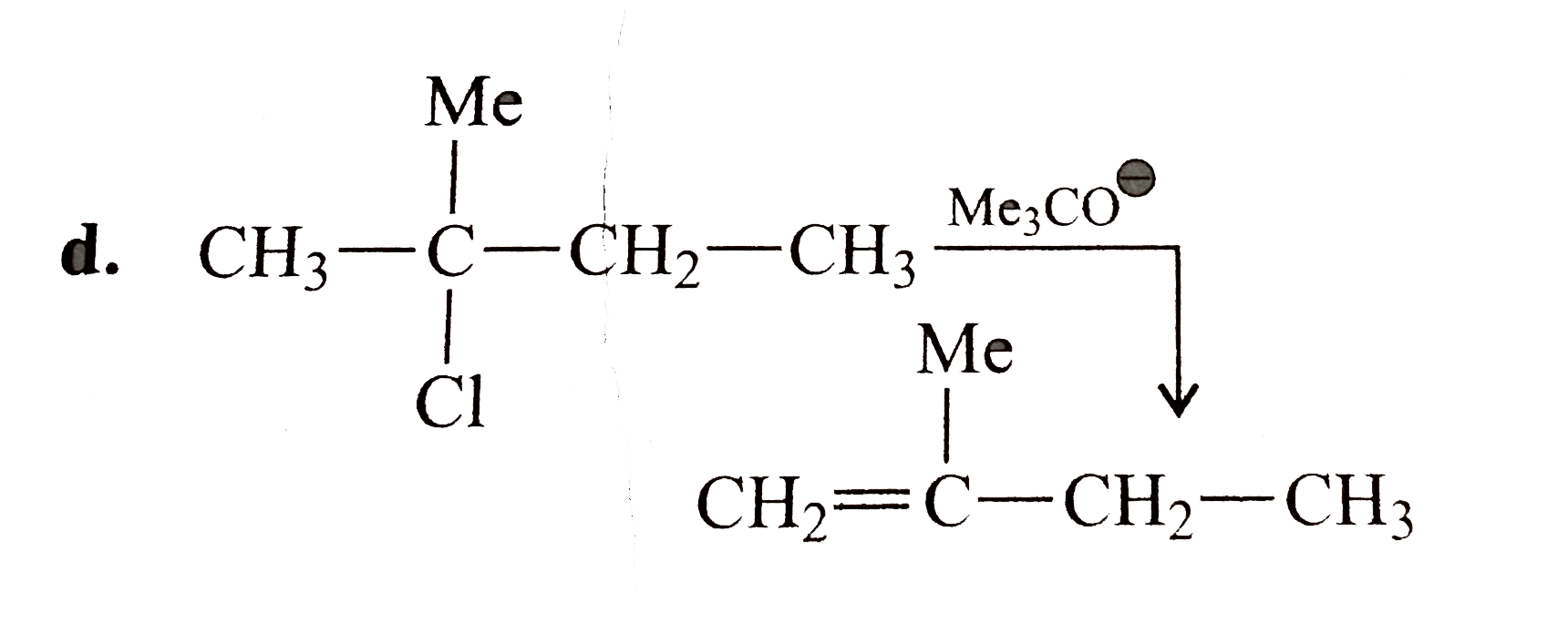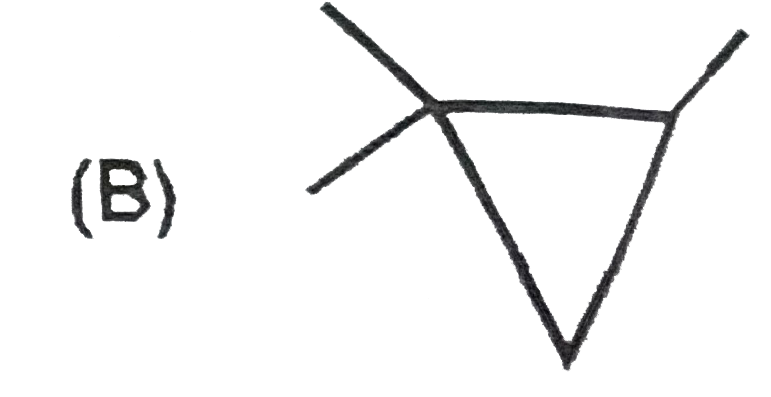(a) Compare the reactivity of Me3COӨK⊕ and EtNH2 in E2 reaction.
(b) Why is Me3COӨK⊕ superior to EtOӨ in E2 reaction ?
(c) Compare the effectiveness of Me3COӨK⊕ in DMSO and Me3COH as solvents.
(d) Me2CC1CH2CH3Me3COӨK⋅−−−−−−−→ Major alkene.
(a) Me3COӨ is more than basic than EtNH2.
[Acidic characterEtNH⊕3>Me3COHBasic characterEtNH2<Me3CΘ]
(b) Large size of Me3COӨ inhibits the SN2 reaction.
(c) Me3COӨ is more reactive in aprotic DMSO where it is not solvated. Its effectiveness in MeCOH is reduced by H-bonding.
(d) 
Less-substituted Hofmann products are formed, because attack by bulky base (Me3COӨ) at 2∘ adjacent H atoms gives more-substituted Saytzeff product (Me2C=CH−CH3) which is sterically hinderd, Preferential attack is at the less-substituted 1∘H.
Topper's Solved these Questions
- ORGANIC REACTION MECHANISMBOOK - CENGAGE CHEMISTRYCHAPTER - ORGANIC REACTION MECHANISMEXERCISE - Solved Example
33 Videos
- ORGANIC REACTION MECHANISMBOOK - CENGAGE CHEMISTRYCHAPTER - ORGANIC REACTION MECHANISMEXERCISE - Subjective
19 Videos
- NCERT BASED EXERCISEBOOK - CENGAGE CHEMISTRYCHAPTER - NCERT BASED EXERCISEEXERCISE - Chemical Equilibrium
72 Videos
- P-BLOCK GROUP 13 - BORON FAMILYBOOK - CENGAGE CHEMISTRYCHAPTER - P-BLOCK GROUP 13 - BORON FAMILYEXERCISE - Exercise Archives (Subjecive)
9 Videos
Similar Questions
Knowledge Check
What is X of the following reaction?
Me2C=CHCH3+CHCl3Me3XA B
B C
C D
D
Me3C−MgCl on reaction with D2O produces :
AMe3CDBMe3CODC(CD)3CDD(CD)3COD.The major product of the following reaction after acidification is
Me2CHCHO+H2C=CH−COCH3OH−−−→A B
B C
C D
D
(a) Show by enthalpy diagram the rate of solvolysis of t−BuCl on increasing the polarity of solvent.
(b) Give the equation of methanolysis of [Me3CSMe2]⊕BrӨ.
(c) Does the effect of solvent prevail for solvolysis of [Me3CSMe2]⊕ ?
View SolutionExplain why (CH3)3C⊕ is more stable than CH3⊕CH2 and ⊕CH3 is less stable.
View SolutionCompare the stability of the following carbanion
(a)ӨCH2−CF3 (b)ӨCH2−CCl3
(c)ӨCH2−CBr3
View SolutionExplain the effect of SN2 rates for the following reactions :
(a) Increasing the polarity of solvent.
(b) Show the T.S with all partial charges for each reaction type.
(I) Me2⊕S−Me+NH3→Me⊕NH3+Me2S
(II) MeI+NH3→Me⊕NH3+IӨ
(III) MeI+ӨOH→MeOH+IӨ
(IV) Me2S⊕−Me+ӨOH→MeOH+Me2S.
View SolutionClassify the reagents shown in bonds in the following equations as nucleophilies or electrophiles. Use curved-arrow notation to show the electron movement.
(a) CH3COOH+HOӨ→CH3COOӨ+H2O
(b) CH3COCH3+NCӨ→CH3C(CN)OHCH3
( c) C6H6+CH3⊕CO→C6H5COCH3.
View Solution
